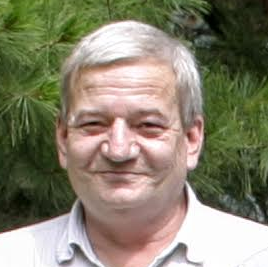1. Neurochemistry Group
We study physiology, biochemistry and pharmacology of cholinergic neurons at the molecular level and molecular pharmacology of other GPCRs. In our study, we mainly employ cell lines but we also use animal models. Our research is focused mainly on these topics:
- biochemical physiology and pharmacology of cholinergic neurons
- development and differentiation of cholinergic neurons
- synthesis, storage, and release of acetylcholine
- presynaptic regulation of acetylcholine release
- cholinergic mechanisms in the pathogenesis of Alzheimer´s disease
- influence of beta-amyloid on acetylcholine metabolism and muscarinic transmission
- molecular pharmacology of muscarinic receptors
- allosteric modulation of receptor activation.
- interaction of receptors with G-proteins
- modelling of muscarinic receptor signal transduction.
2. Group of Biochemistry of Membrane Receptors
The research focuses on the cellular and molecular mechanisms of desensitization of hormone response mediated by the activation of G protein-coupled receptors (GPCR). G protein-coupled receptors are plasma membrane integral proteins that serve as transducers of extracellular signals across the plasma membrane bilayer to the cell interior. GPCR play a key role in the regulation of many physiological processes and functions. Moreover, GPCRs represent one of the most important groups of targets for therapeutics. The main areas of the research are:
- role of the cell membrane and membrane domains
- opioid receptors and drug addiction
- effect of monovalent ions on δ-opioid receptors – analysis of lithium effect in living cells and isolated cell membranes.
Publication 2015 - 2021
Projects
Given the broad range of functions that muscarinic receptors subserve, it is of fundamental importance to find subtype-selective ligands for therapeutic use in specific disorders.
More
Ectopic agonists represent a new class of drugs that bind out of the orthosteric site and display unique functional selectivity through mechanisms yet to be defined. We perform a detailed analysis of receptor activation induced by ectopic and classical agonists with the aim to reveal molecular mechanisms underlying functional selectivity.
More
A biased agonist is a ligand which stabilizes a particular active conformation of a receptor, thus stimulating some responses but not others. Biased agonists might represent a novel and uniquely effective type of therapeutic agent with reduced side-effects.
More
The aim of the project is to determine how disruption of cholinergic activation of striatal GABAergic interneurons alters striatal signalling and striatum-based behaviour by using a mouse model with deletion of the β2 nicotinic acetylcholine receptor subunit in striatal GABAergic interneurons.
More
Cholesterol has been found to co-crystallize with a number of GPCRs. Our current experiments show that membrane cholesterol specifically binds to a muscarinic receptor and slows down their activation.
More
Show more
Achievements
 Jakubík, J.; Randáková, A. Insights into the Operational Model of Agonism of Receptor Dimers. Expert Opin. Drug Discov. 2022, 17, 1181–1191, doi:10.1080/17460441.2023.2147502. Invited Review.
The exact ranking of efficacies and potencies of agonists is indispensable in the discovery of new selective agonists.
The operational model of agonism (OMA) is the current standard.
Many receptors function as oligomers, requiring an extension of the classical OMA.
Extension of OMA by slope factors gives simple equations of functional response that are easy to fit experimental data but results may be inaccurate.
Extension of OMA by cooperativity factors gives accurate but complex equations of functional response.
Extension of OMA by cooperativity factors should be preferred.
More
Jakubík, J.; Randáková, A. Insights into the Operational Model of Agonism of Receptor Dimers. Expert Opin. Drug Discov. 2022, 17, 1181–1191, doi:10.1080/17460441.2023.2147502. Invited Review.
The exact ranking of efficacies and potencies of agonists is indispensable in the discovery of new selective agonists.
The operational model of agonism (OMA) is the current standard.
Many receptors function as oligomers, requiring an extension of the classical OMA.
Extension of OMA by slope factors gives simple equations of functional response that are easy to fit experimental data but results may be inaccurate.
Extension of OMA by cooperativity factors gives accurate but complex equations of functional response.
Extension of OMA by cooperativity factors should be preferred.
More
 Randáková, A.; Jakubík, J. Functionally Selective and Biased Agonists of Muscarinic Receptors. Pharmacol. Res. 2021, 169, 105641, doi:10.1016/j.phrs.2021.105641.
Invited review.
More
Randáková, A.; Jakubík, J. Functionally Selective and Biased Agonists of Muscarinic Receptors. Pharmacol. Res. 2021, 169, 105641, doi:10.1016/j.phrs.2021.105641.
Invited review.
More
 Abbondanza, A.; Ribeiro Bas, I.; Modrak, M.; Capek, M.; Minich, J.; Tyshkevich, A.; Naser, S.; Rangotis, R.; Houdek, P.; Sumova, A.; et al. Nicotinic Acetylcholine Receptors Expressed by Striatal Interneurons Inhibit Striatal Activity and Control Striatal-Dependent Behaviors. J. Neurosci. 2022, 42, 2786–2803, doi:10.1523/JNEUROSCI.1627-21.2022.
A large variety of nicotinic acetylcholine receptors (nAChRs) are expressed in the striatum, a brain region that is crucial in the control of behaviour. The complexity of receptors with different functions is hindering our understanding of mechanisms through which striatal acetylcholine modulates behaviour. We focused on the role of a small population of beta2-containing nAChRs. We identified neuronal types expressing these receptors and determined their impact on the control of explorative behaviour, anxiety-like behaviour, learning, and sensitivity to stimulants. Additional experiments showed that these alterations were associated with an overall increased activity of striatal neurons. Thus, the small population of nicotinic receptors represents an interesting target for modulation of response to stimulant drugs and other striatal-based behaviour.
More
Abbondanza, A.; Ribeiro Bas, I.; Modrak, M.; Capek, M.; Minich, J.; Tyshkevich, A.; Naser, S.; Rangotis, R.; Houdek, P.; Sumova, A.; et al. Nicotinic Acetylcholine Receptors Expressed by Striatal Interneurons Inhibit Striatal Activity and Control Striatal-Dependent Behaviors. J. Neurosci. 2022, 42, 2786–2803, doi:10.1523/JNEUROSCI.1627-21.2022.
A large variety of nicotinic acetylcholine receptors (nAChRs) are expressed in the striatum, a brain region that is crucial in the control of behaviour. The complexity of receptors with different functions is hindering our understanding of mechanisms through which striatal acetylcholine modulates behaviour. We focused on the role of a small population of beta2-containing nAChRs. We identified neuronal types expressing these receptors and determined their impact on the control of explorative behaviour, anxiety-like behaviour, learning, and sensitivity to stimulants. Additional experiments showed that these alterations were associated with an overall increased activity of striatal neurons. Thus, the small population of nicotinic receptors represents an interesting target for modulation of response to stimulant drugs and other striatal-based behaviour.
More
 Dolejší, E.; Szánti-Pintér, E.; Chetverikov, N.; Nelic, D.; Randáková, A.; Doležal, V.; Kudová, E.; Jakubík, J. Neurosteroids and Steroid Hormones Are Allosteric Modulators of Muscarinic Receptors. Neuropharmacology 2021, 199, 108798, doi:10.1016/j.neuropharm.2021.108798.
Some neurosteroids and steroid hormones bind to muscarinic acetylcholine receptors with the affinity of 100 nM or greater
Steroids acting at nanomolar concentrations represent the novel pharmacophore of allosteric modulators of muscarinic receptors
Corticosterone and progesterone allosterically modulate muscarinic receptors at physiologically relevant concentrations
More
Proper determination of agonist efficacy is indispensable in the evaluation of agonist selectivity and bias to activation of specific signalling pathways. The operational model of pharmacological agonism is a useful means for achieving this goal.
More
Show more
Dolejší, E.; Szánti-Pintér, E.; Chetverikov, N.; Nelic, D.; Randáková, A.; Doležal, V.; Kudová, E.; Jakubík, J. Neurosteroids and Steroid Hormones Are Allosteric Modulators of Muscarinic Receptors. Neuropharmacology 2021, 199, 108798, doi:10.1016/j.neuropharm.2021.108798.
Some neurosteroids and steroid hormones bind to muscarinic acetylcholine receptors with the affinity of 100 nM or greater
Steroids acting at nanomolar concentrations represent the novel pharmacophore of allosteric modulators of muscarinic receptors
Corticosterone and progesterone allosterically modulate muscarinic receptors at physiologically relevant concentrations
More
Proper determination of agonist efficacy is indispensable in the evaluation of agonist selectivity and bias to activation of specific signalling pathways. The operational model of pharmacological agonism is a useful means for achieving this goal.
More
Show more
Publications
Ujčíková; Hana - Lee; Y. S. - Roubalová; Lenka - Svoboda; Petr
.
The impact of multifunctional enkephalin analogs and morphine on the protein changes in crude membrane fractions isolated from the rat brain cortex and hippocampus
.
Peptides. 2024; 174(April); 171165
.
IF = 3.0
[ASEP]
[
doi
]
Urushadze; Anna - Janíček; M. - Abbondanza; Alice - Janíčková; Helena
.
Timed Sequence Task: A New Paradigm to Study Motor Learning and Flexibility in Mice
.
ENEURO. 2023; 10(10); 1-13
.
IF = 3.4
[ASEP]
[
doi
]
Ujčíková; Hana - Hejnová; L. - Novotný; J. - Svoboda; Petr
.
Protracted morphine withdrawal induces upregulation of peroxiredoxin II and reduces 14-3-3 protein levels in the rat brain cortex and hippocampus
.
Brain Research. 2023; 1813(Aug 15); 148428
.
IF = 2.9
[ASEP]
[
doi
]
Szczurowska; Ewa - Szánti-Pintér; Eszter - Chetverikov; Nikolai - Randáková; Alena - Kudová; Eva - Jakubík; Jan
.
Modulation of Muscarinic Signalling in the Central Nervous System by Steroid Hormones and Neurosteroids
.
International Journal of Molecular Sciences. 2023; 24(1)); 507
.
IF = 5.6
[ASEP]
[
doi
]
Randáková; Alena - Nelic; Dominik - Jakubík; Jan
.
A critical re-evaluation of the slope factor of the operational model of agonism: When to exponentiate operational efficacy
.
Scientific Reports. 2023; 13(1); 17587
.
IF = 4.6
[ASEP]
[
doi
]
Show more












